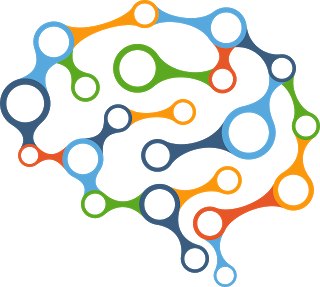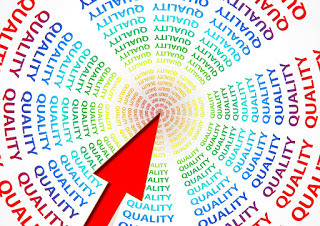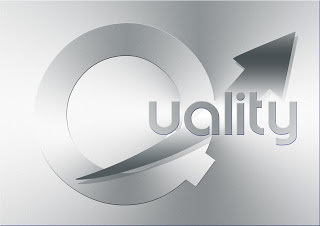Pearl Zhu's Blog, page 1247
March 2, 2017
The Perception, Priority, and Performance of Digital IT
 IT is the spinal cord for the modern organization, integrating various functional capabilities to bring out technology-enabled business solutions and build the capacity to build business competency. IT plays even a more crucial role in the digital transformation of the organization. Besides the disruptive digital technology trends, IT effects in radical digital tuning are to be an integrator in knitting all important business factors, to improve business agility, flexibility, innovation and catalyze business growth. Here are the perception, priority, and performance of running a digital IT organization. Perception: In the traditional businesses, many IT organizations get stuck at the lower or middle level of maturity, running in a reactive mode, no wonder it is perceived as an order taker and support desk only. Same as CIOs, when IT only focuses on the operational part of the business, IT leaders are perceived as tactical IT managers without the seat at the big table. Some say, the gap between IT and the business is indeed enlarged d due to mistrust or “lost in translation” syndrome, and the different part of the business adapt to change with the different speed. IT is even perceived as the change laggard in some companies. Hence, to reinvent IT for getting digital ready, IT has to change the business’s perception of their organization, from a back office commodity service provider to keep the lights on, to an equal business partner for co-creating the strategy and contributing to the top line business growth. Due to increasing speed of change and exponential growth of information, now it actually has an opportunity for IT to unleash its potential, and demonstrate the execution of responsibility, to be recognized as a strategic business enabler and the innovation engine of the digital transformation.
IT is the spinal cord for the modern organization, integrating various functional capabilities to bring out technology-enabled business solutions and build the capacity to build business competency. IT plays even a more crucial role in the digital transformation of the organization. Besides the disruptive digital technology trends, IT effects in radical digital tuning are to be an integrator in knitting all important business factors, to improve business agility, flexibility, innovation and catalyze business growth. Here are the perception, priority, and performance of running a digital IT organization. Perception: In the traditional businesses, many IT organizations get stuck at the lower or middle level of maturity, running in a reactive mode, no wonder it is perceived as an order taker and support desk only. Same as CIOs, when IT only focuses on the operational part of the business, IT leaders are perceived as tactical IT managers without the seat at the big table. Some say, the gap between IT and the business is indeed enlarged d due to mistrust or “lost in translation” syndrome, and the different part of the business adapt to change with the different speed. IT is even perceived as the change laggard in some companies. Hence, to reinvent IT for getting digital ready, IT has to change the business’s perception of their organization, from a back office commodity service provider to keep the lights on, to an equal business partner for co-creating the strategy and contributing to the top line business growth. Due to increasing speed of change and exponential growth of information, now it actually has an opportunity for IT to unleash its potential, and demonstrate the execution of responsibility, to be recognized as a strategic business enabler and the innovation engine of the digital transformation.
Priority: Modern IT organizations are often overloaded and understaffed. Many IT organizations spend the high proportion of time and resources on transaction-related activities, and they measure IT performance from inside-out IT lens. Many IT organizations also act as the controller without doing enough to engage the business partner into collecting requirement and setting priority. Such management style would cause the desire to dominate, running IT as technology challenges, not business solutions, and the vanity of entitled gratuities. No wonder such IT organizations often get stuck at the lower level of maturity and try to make an alignment with the business. A premium digital IT needs to understand stakeholders’ expectations and propose a service/solution portfolio that corresponds to both demand and cost drivers with a focus on business priority and building unique business competency. A good place to start is by trying to get all parts of the business on the same process for proposing, justifying and prioritizing projects. CIOs don't set priorities in vacuums. Rather, they'll use the enterprise's strategy and business objectives to determine which capabilities are needed to enable it to achieve those objectives and then execute projects to build or solidify those capabilities.
 Performance: The various activities are needed to manage performance both at strategic and operational level, such as: Improving speed & agility; improving revenue; improving customer acquisition/retention; lowering risk/cost, etc. IT performance metrics need to evolve to something that matters to the business audience, at the same time that "business sentiment" needs to get put into something more tangible, such as optimize processes, or improve productivity. Identify the key performance indicators of the company and detail how your initiatives will drive improvements in the current state. Always attempt to identify areas in which measurable improvements can be realized, providing demonstrable value is essential, in some instances, these areas have been low-hanging fruit.It is a very good idea to make IT metrics transparent to the varying departments, to visualize the progress and also to evaluate if the KPIs being used are the same as the ones they use to describe IT activity. Your measures should cover all areas that contribute to value creation including service quality, employee engagement, customer satisfaction, innovation benefit, and financial outcomes. "Continual improvement" is IT mantra in the digital era, CIOs with improvement mindset continually look to optimize processes and improve customer satisfaction.
Performance: The various activities are needed to manage performance both at strategic and operational level, such as: Improving speed & agility; improving revenue; improving customer acquisition/retention; lowering risk/cost, etc. IT performance metrics need to evolve to something that matters to the business audience, at the same time that "business sentiment" needs to get put into something more tangible, such as optimize processes, or improve productivity. Identify the key performance indicators of the company and detail how your initiatives will drive improvements in the current state. Always attempt to identify areas in which measurable improvements can be realized, providing demonstrable value is essential, in some instances, these areas have been low-hanging fruit.It is a very good idea to make IT metrics transparent to the varying departments, to visualize the progress and also to evaluate if the KPIs being used are the same as the ones they use to describe IT activity. Your measures should cover all areas that contribute to value creation including service quality, employee engagement, customer satisfaction, innovation benefit, and financial outcomes. "Continual improvement" is IT mantra in the digital era, CIOs with improvement mindset continually look to optimize processes and improve customer satisfaction.
IT needs to reinvent its brand via both working hard and working smart. Setting the right priority to create multidimensional business value and update the business’s perception of IT as a cost center. The faster the top leadership team understands that IT is not just technical, but rather business-driven, the high visible IT can elevate its maturity from “reactive to change” to proactively driving business transformations and improve its performance to get digital ready.
Follow us at: @Pearl_Zhu
Published on March 02, 2017 23:08
March 1, 2017
The Monthly Spotlight on Digital CIOs: The CIO as Change Agent in Digital Transformation Feb. 2017
Modern CIOs have many personas and face great challenges.
Modern CIOs have many personas and face great challenges. It is not sufficient to only keep the light on. Regardless of which industry or the nature of organization you are in, being a digital leader will need to master the art of creating unique, differentiating value from piles of commoditized technologies, but more specifically, what are the digital-savvy CIOs doing to run IT as a growth engine and innovation Hub? Here is the monthly spotlight of the CIO. The CIO as Change Agent in Digital TransformationRefresh CIO Leadership to Accelerate Digital Transformation The CIO role is considerably a newer top executive role compared to other business executive positions. At the static industrial age, IT was perceived as a cost center, and CIOs were labeled as the technical geek and tactical manager, and the majority of IT organizations get stuck in the lower level of maturity. However, due to the exponential growth of information and increasing speed of changes, technologies are often the disruptive force behind digital technologies. IT plays a more significant role in leading businesses forward at the front. So, how to refresh CIO leadership to accelerate digital transformation?From a “Surviving CIO” to a Thriving CIO Compare to other CXO titles, CIO is considerably a newer role with only around three decades history. Due to the changing nature of technology, CIOs and IT seem to be always in the hot seat to adapt to the change. What are the biggest mistakes that a CIO can make? How much technology knowledge does an effective CIO require? What’s the significant difference between a traditional CIO and a digital CIO? Or to put simply, how can CIOs shift mentality from a “surviving” mode to a “thriving” mode?The Digital-Savvy CIO Modern CIOs face many challenges, it is not sufficient to only keep the light on. Regardless of which industry or the nature of organization you are in, being a digital leader will need to master the art of creating unique and differentiative value from piles of commoditized technologies, but more specifically, what are the digital-savvy CIOs doing to run IT as a value creator and innovation engine?
Where are the CIO’s Real Challenges in Digital Transformation? Digital provides significant opportunities for business growth, also brings unprecedented risks to cause business fall. Never before has IT and business been so closely tied together. Never before has technology moved more quickly and missteps have larger trajectory impacts on every aspect of the business?
 The CIO as a Digital Orchestra Conductor? Metaphorically, the CIO need to be the bridge between the strategic goals of the business and IT. At the age of cloud, the CIO also needs to lead as a conductor than a constructor, in order to speed up and improve IT agility. A forward-thinking CIO will figure out a way to leverage the cloud to explore business options much more quickly. As the cloud era is also the age of innovation and radical digitalization, while IT provides important structure and framework to streamline the process and enable the digital transformation. Learning the business is a must for the CIO to come up with an experiential knowledge coupled with data for enabling and empowering the enterprise. For larger enterprises, their IT resources and capability are often the company's secret sauce and the key to how they deliver value to the business?
The CIO as a Digital Orchestra Conductor? Metaphorically, the CIO need to be the bridge between the strategic goals of the business and IT. At the age of cloud, the CIO also needs to lead as a conductor than a constructor, in order to speed up and improve IT agility. A forward-thinking CIO will figure out a way to leverage the cloud to explore business options much more quickly. As the cloud era is also the age of innovation and radical digitalization, while IT provides important structure and framework to streamline the process and enable the digital transformation. Learning the business is a must for the CIO to come up with an experiential knowledge coupled with data for enabling and empowering the enterprise. For larger enterprises, their IT resources and capability are often the company's secret sauce and the key to how they deliver value to the business?
The “Future of CIO” Blog has reached 1.7 million page views with about #3500th blog posting in 59+ different categories of leadership, management, strategy, digitalization, change/talent, etc. The content richness is not for its own sake, but to convey the vision and share the wisdom. Blogging is not about writing, but about thinking and innovating the new ideas; it’s not just about WHAT to say, but about WHY to say, and HOW to say it. It reflects the color and shade of your thought patterns, and it indicates the peaks and curves of your thinking waves. Unlike pure entertainment, quality and professional content takes time for digesting, contemplation and engaging, and therefore, it takes the time to attract the "hungry minds" and the "deep souls." It’s the journey to amplify diverse voices and deepen digital footprints, and it's the way to harness your innovative spirit.Follow us at: @Pearl_Zhu
Modern CIOs have many personas and face great challenges. It is not sufficient to only keep the light on. Regardless of which industry or the nature of organization you are in, being a digital leader will need to master the art of creating unique, differentiating value from piles of commoditized technologies, but more specifically, what are the digital-savvy CIOs doing to run IT as a growth engine and innovation Hub? Here is the monthly spotlight of the CIO. The CIO as Change Agent in Digital TransformationRefresh CIO Leadership to Accelerate Digital Transformation The CIO role is considerably a newer top executive role compared to other business executive positions. At the static industrial age, IT was perceived as a cost center, and CIOs were labeled as the technical geek and tactical manager, and the majority of IT organizations get stuck in the lower level of maturity. However, due to the exponential growth of information and increasing speed of changes, technologies are often the disruptive force behind digital technologies. IT plays a more significant role in leading businesses forward at the front. So, how to refresh CIO leadership to accelerate digital transformation?From a “Surviving CIO” to a Thriving CIO Compare to other CXO titles, CIO is considerably a newer role with only around three decades history. Due to the changing nature of technology, CIOs and IT seem to be always in the hot seat to adapt to the change. What are the biggest mistakes that a CIO can make? How much technology knowledge does an effective CIO require? What’s the significant difference between a traditional CIO and a digital CIO? Or to put simply, how can CIOs shift mentality from a “surviving” mode to a “thriving” mode?The Digital-Savvy CIO Modern CIOs face many challenges, it is not sufficient to only keep the light on. Regardless of which industry or the nature of organization you are in, being a digital leader will need to master the art of creating unique and differentiative value from piles of commoditized technologies, but more specifically, what are the digital-savvy CIOs doing to run IT as a value creator and innovation engine?
Where are the CIO’s Real Challenges in Digital Transformation? Digital provides significant opportunities for business growth, also brings unprecedented risks to cause business fall. Never before has IT and business been so closely tied together. Never before has technology moved more quickly and missteps have larger trajectory impacts on every aspect of the business?
 The CIO as a Digital Orchestra Conductor? Metaphorically, the CIO need to be the bridge between the strategic goals of the business and IT. At the age of cloud, the CIO also needs to lead as a conductor than a constructor, in order to speed up and improve IT agility. A forward-thinking CIO will figure out a way to leverage the cloud to explore business options much more quickly. As the cloud era is also the age of innovation and radical digitalization, while IT provides important structure and framework to streamline the process and enable the digital transformation. Learning the business is a must for the CIO to come up with an experiential knowledge coupled with data for enabling and empowering the enterprise. For larger enterprises, their IT resources and capability are often the company's secret sauce and the key to how they deliver value to the business?
The CIO as a Digital Orchestra Conductor? Metaphorically, the CIO need to be the bridge between the strategic goals of the business and IT. At the age of cloud, the CIO also needs to lead as a conductor than a constructor, in order to speed up and improve IT agility. A forward-thinking CIO will figure out a way to leverage the cloud to explore business options much more quickly. As the cloud era is also the age of innovation and radical digitalization, while IT provides important structure and framework to streamline the process and enable the digital transformation. Learning the business is a must for the CIO to come up with an experiential knowledge coupled with data for enabling and empowering the enterprise. For larger enterprises, their IT resources and capability are often the company's secret sauce and the key to how they deliver value to the business? The “Future of CIO” Blog has reached 1.7 million page views with about #3500th blog posting in 59+ different categories of leadership, management, strategy, digitalization, change/talent, etc. The content richness is not for its own sake, but to convey the vision and share the wisdom. Blogging is not about writing, but about thinking and innovating the new ideas; it’s not just about WHAT to say, but about WHY to say, and HOW to say it. It reflects the color and shade of your thought patterns, and it indicates the peaks and curves of your thinking waves. Unlike pure entertainment, quality and professional content takes time for digesting, contemplation and engaging, and therefore, it takes the time to attract the "hungry minds" and the "deep souls." It’s the journey to amplify diverse voices and deepen digital footprints, and it's the way to harness your innovative spirit.Follow us at: @Pearl_Zhu
Published on March 01, 2017 23:45
The Monthly Spotlight on Digital CIOs: The CIO’s Role in Digital Transformation Feb. 2017
Modern CIOs have many personas and face great challenges.
Modern CIOs have many personas and face great challenges. It is not sufficient to only keep the light on. Regardless of which industry or the nature of organization you are in, being a digital leader will need to master the art of creating unique, differentiating value from piles of commoditized technologies, but more specifically, what are the digital-savvy CIOs doing to run IT as a growth engine and innovation Hub? Here is the monthly spotlight of the CIO. The CIO’s Role in Digital TransformationRefresh CIO Leadership to Accelerate Digital Transformation The CIO role is considerably a newer top executive role compared to other business executive positions. At the static industrial age, IT was perceived as a cost center, and CIOs were labeled as the technical geek and tactical manager, and the majority of IT organizations get stuck in the lower level of maturity. However, due to the exponential growth of information and increasing speed of changes, technologies are often the disruptive force behind digital technologies. IT plays a more significant role in leading businesses forward at the front. So, how to refresh CIO leadership to accelerate digital transformation?From a “Surviving CIO” to a Thriving CIO Compare to other CXO titles, CIO is considerably a newer role with only around three decades history. Due to the changing nature of technology, CIOs and IT seem to be always in the hot seat to adapt to the change. What are the biggest mistakes that a CIO can make? How much technology knowledge does an effective CIO require? What’s the significant difference between a traditional CIO and a digital CIO? Or to put simply, how can CIOs shift mentality from a “surviving” mode to a “thriving” mode?The Digital-Savvy CIO Modern CIOs face many challenges, it is not sufficient to only keep the light on. Regardless of which industry or the nature of organization you are in, being a digital leader will need to master the art of creating unique and differentiative value from piles of commoditized technologies, but more specifically, what are the digital-savvy CIOs doing to run IT as a value creator and innovation engine?Where are the CIO’s Real Challenges in Digital Transformation? Digital provides significant opportunities for business growth, also brings unprecedented risks to cause business fall. Never before has IT and business been so closely tied together. Never before has technology moved more quickly and missteps have larger trajectory impacts on every aspect of the business?
 The CIO as a Digital Orchestra Conductor? Metaphorically, the CIO need to be the bridge between the strategic goals of the business and IT. At the age of cloud, the CIO also needs to lead as a conductor than a constructor, in order to speed up and improve IT agility. A forward-thinking CIO will figure out a way to leverage the cloud to explore business options much more quickly. As the cloud era is also the age of innovation and radical digitalization, while IT provides important structure and framework to streamline the process and enable the digital transformation. Learning the business is a must for the CIO to come up with an experiential knowledge coupled with data for enabling and empowering the enterprise. For larger enterprises, their IT resources and capability are often the company's secret sauce and the key to how they deliver value to the business?
The CIO as a Digital Orchestra Conductor? Metaphorically, the CIO need to be the bridge between the strategic goals of the business and IT. At the age of cloud, the CIO also needs to lead as a conductor than a constructor, in order to speed up and improve IT agility. A forward-thinking CIO will figure out a way to leverage the cloud to explore business options much more quickly. As the cloud era is also the age of innovation and radical digitalization, while IT provides important structure and framework to streamline the process and enable the digital transformation. Learning the business is a must for the CIO to come up with an experiential knowledge coupled with data for enabling and empowering the enterprise. For larger enterprises, their IT resources and capability are often the company's secret sauce and the key to how they deliver value to the business?
The “Future of CIO” Blog has reached 1.7 million page views with about #3500th blog posting in 59+ different categories of leadership, management, strategy, digitalization, change/talent, etc. The content richness is not for its own sake, but to convey the vision and share the wisdom. Blogging is not about writing, but about thinking and innovating the new ideas; it’s not just about WHAT to say, but about WHY to say, and HOW to say it. It reflects the color and shade of your thought patterns, and it indicates the peaks and curves of your thinking waves. Unlike pure entertainment, quality and professional content takes time for digesting, contemplation and engaging, and therefore, it takes the time to attract the "hungry minds" and the "deep souls." It’s the journey to amplify diverse voices and deepen digital footprints, and it's the way to harness your innovative spirit.Follow us at: @Pearl_Zhu
Modern CIOs have many personas and face great challenges. It is not sufficient to only keep the light on. Regardless of which industry or the nature of organization you are in, being a digital leader will need to master the art of creating unique, differentiating value from piles of commoditized technologies, but more specifically, what are the digital-savvy CIOs doing to run IT as a growth engine and innovation Hub? Here is the monthly spotlight of the CIO. The CIO’s Role in Digital TransformationRefresh CIO Leadership to Accelerate Digital Transformation The CIO role is considerably a newer top executive role compared to other business executive positions. At the static industrial age, IT was perceived as a cost center, and CIOs were labeled as the technical geek and tactical manager, and the majority of IT organizations get stuck in the lower level of maturity. However, due to the exponential growth of information and increasing speed of changes, technologies are often the disruptive force behind digital technologies. IT plays a more significant role in leading businesses forward at the front. So, how to refresh CIO leadership to accelerate digital transformation?From a “Surviving CIO” to a Thriving CIO Compare to other CXO titles, CIO is considerably a newer role with only around three decades history. Due to the changing nature of technology, CIOs and IT seem to be always in the hot seat to adapt to the change. What are the biggest mistakes that a CIO can make? How much technology knowledge does an effective CIO require? What’s the significant difference between a traditional CIO and a digital CIO? Or to put simply, how can CIOs shift mentality from a “surviving” mode to a “thriving” mode?The Digital-Savvy CIO Modern CIOs face many challenges, it is not sufficient to only keep the light on. Regardless of which industry or the nature of organization you are in, being a digital leader will need to master the art of creating unique and differentiative value from piles of commoditized technologies, but more specifically, what are the digital-savvy CIOs doing to run IT as a value creator and innovation engine?Where are the CIO’s Real Challenges in Digital Transformation? Digital provides significant opportunities for business growth, also brings unprecedented risks to cause business fall. Never before has IT and business been so closely tied together. Never before has technology moved more quickly and missteps have larger trajectory impacts on every aspect of the business?
 The CIO as a Digital Orchestra Conductor? Metaphorically, the CIO need to be the bridge between the strategic goals of the business and IT. At the age of cloud, the CIO also needs to lead as a conductor than a constructor, in order to speed up and improve IT agility. A forward-thinking CIO will figure out a way to leverage the cloud to explore business options much more quickly. As the cloud era is also the age of innovation and radical digitalization, while IT provides important structure and framework to streamline the process and enable the digital transformation. Learning the business is a must for the CIO to come up with an experiential knowledge coupled with data for enabling and empowering the enterprise. For larger enterprises, their IT resources and capability are often the company's secret sauce and the key to how they deliver value to the business?
The CIO as a Digital Orchestra Conductor? Metaphorically, the CIO need to be the bridge between the strategic goals of the business and IT. At the age of cloud, the CIO also needs to lead as a conductor than a constructor, in order to speed up and improve IT agility. A forward-thinking CIO will figure out a way to leverage the cloud to explore business options much more quickly. As the cloud era is also the age of innovation and radical digitalization, while IT provides important structure and framework to streamline the process and enable the digital transformation. Learning the business is a must for the CIO to come up with an experiential knowledge coupled with data for enabling and empowering the enterprise. For larger enterprises, their IT resources and capability are often the company's secret sauce and the key to how they deliver value to the business? The “Future of CIO” Blog has reached 1.7 million page views with about #3500th blog posting in 59+ different categories of leadership, management, strategy, digitalization, change/talent, etc. The content richness is not for its own sake, but to convey the vision and share the wisdom. Blogging is not about writing, but about thinking and innovating the new ideas; it’s not just about WHAT to say, but about WHY to say, and HOW to say it. It reflects the color and shade of your thought patterns, and it indicates the peaks and curves of your thinking waves. Unlike pure entertainment, quality and professional content takes time for digesting, contemplation and engaging, and therefore, it takes the time to attract the "hungry minds" and the "deep souls." It’s the journey to amplify diverse voices and deepen digital footprints, and it's the way to harness your innovative spirit.Follow us at: @Pearl_Zhu
Published on March 01, 2017 23:45
An Exceptional Board
 Corporate Board is one of the most significant top leadership teams and governance bodies in modern businesses. Generally speaking, the corporate boards have a couple of main functions such as strategy oversight, governance practices (monitoring, risk management), advising and coaching (providing advice & support to executives), and resource provision (opening their networks etc.) But how to build an exceptional board that can provide exceptional values to the business, and unleash the full potential of the organization?
Corporate Board is one of the most significant top leadership teams and governance bodies in modern businesses. Generally speaking, the corporate boards have a couple of main functions such as strategy oversight, governance practices (monitoring, risk management), advising and coaching (providing advice & support to executives), and resource provision (opening their networks etc.) But how to build an exceptional board that can provide exceptional values to the business, and unleash the full potential of the organization?
Exceptional leadership influence: An exceptional board is composed with exceptional BoDs who present strong digital leadership traits such as critical thinking, creativity, influence, inquisitiveness, ethics, global perspective, and cultural awareness. They practice directorship based on the breadth of business knowledge and in-depth expertise of their domain, to help connect the wider dots and set the tones for the business innovation and digital transformation. They are the masterminds and social influencers for advocating changes and digital transformation. The exceptional BoDs also have the synthetic thinking capabilities and strong innovation skills to deal with situations that they have not dealt with before and possess the confidence and the experience to set the entrepreneurial or intrapreneurial spirit for growth and innovating, to ride the wave of digital transformation.
Exceptional business understanding: As their businesses change shape, size, expansion, and transformations, they need conditioning and improvement. Further, businesses and organizations that find themselves setting new and radically different trajectories are facing a daunting task of navigating largely uncharted territories. Exceptional BoDs knows the business, knows the corporate direction and can even influence that direction and make gains leveraging advanced digital technologies. Hence, exceptional BoDs needs to be an independent thinker, unbiased communicator, wise advisor, flexible facilitator and global leader these days. In the face of vast areas of unknowns; they can also help assess the organizational digital maturity, even the digital transformation tools platforms, or frameworks which are needed that addresses both the mechanics of getting the work done and the human factors associated with the major thought paradigm shift that must take place within the organization at all levels in order to transform seamlessly.
 Exceptional performance-driver: Besides compliance, boards need to make laser-focused performance driven agenda. At the majority of the time, the board agenda should be focused on the progress toward the goals, targets, schedules., etc. It is responsible for authorizing and monitoring business strategy, develop business policies offering further constraint/guidance to implementation of the strategy, monitor performance and implementation of the strategy, manage risks across all domains of interest. The Board's role, in large part, is to make good decisions that enhance the value creation for the organization. They need to focus on their own performance as well as the performance of the management team, and, that performance is not limited to financial performance, but also to the firm's performance in creating value for employees and customers. Business performance can be affected by numerous factors of which governance is one of them. Ultimately, the board takes the praise or the blame depending largely on their ability to influence the business outcomes.It's not only about now but also about the future and that means an open mindset to change.
Exceptional performance-driver: Besides compliance, boards need to make laser-focused performance driven agenda. At the majority of the time, the board agenda should be focused on the progress toward the goals, targets, schedules., etc. It is responsible for authorizing and monitoring business strategy, develop business policies offering further constraint/guidance to implementation of the strategy, monitor performance and implementation of the strategy, manage risks across all domains of interest. The Board's role, in large part, is to make good decisions that enhance the value creation for the organization. They need to focus on their own performance as well as the performance of the management team, and, that performance is not limited to financial performance, but also to the firm's performance in creating value for employees and customers. Business performance can be affected by numerous factors of which governance is one of them. Ultimately, the board takes the praise or the blame depending largely on their ability to influence the business outcomes.It's not only about now but also about the future and that means an open mindset to change. Building an exceptional board is challenging. The real BoD’s dilemma is that driving the business forward is extremely difficult, it means looking into an unknown future and attempting to define the landscape with its risks and opportunities. It also means taking control of the softer issues, such as setting policy, executive succession, multidimensional thinking, advising setting risk appetite, etc, but it plays a significant role in running an exceptional digital organization. Follow us at: @Pearl_Zhu
Published on March 01, 2017 23:41
The Observations, Objectives and Obstacles of Digital Transformation
 Digital Paradigm means hyper-connectivity, interdependence, and integration. Digital becomes the very fabric of the modern business, being outside-in and customer-centric is the new mantra for forward-looking digital organizations today. Digital transformation is not just a one-dimensional technology upgrading, but a multidirectional business exploration to get the organization digital ready. Here are the observations, objective, and obstacles about digital transformation.
Digital Paradigm means hyper-connectivity, interdependence, and integration. Digital becomes the very fabric of the modern business, being outside-in and customer-centric is the new mantra for forward-looking digital organizations today. Digital transformation is not just a one-dimensional technology upgrading, but a multidirectional business exploration to get the organization digital ready. Here are the observations, objective, and obstacles about digital transformation.
Observation: Before taking actions, start a deep observation to understand your business, and assess the business stage in a life cycle of the business, dig through the real issues need to be addressed, the causes of changes, with the realization that where you are currently no long can deliver the business objective and vision of success for your company and your shareholders. Observe your people, are they satisfied and fully engaged with the work? Observe your culture - the collective mindset, is it positive and innovative, or the opposite is true? Observe how things get done in the organization, is the process over complicated, or bureaucracy blocks the way? Moreover, a gap analysis, skills/business capability assessment, effectiveness evaluation, efficiency study, workflow analysis, maturity rating, and knowledge of trends and models that work best to meet the business goals are needed before new schemes and designs are created and agreed upon across the business and all shared services. Take a stepwise approach, and walk through “look, listen, question, understand, plan, test and collaboration,” phases for managing change effort and observation should always be the first, and one of the most critical steps in any change and business transformation management scenario.
 Objectives: Transformation requires a commitment to a goal, goals are high-level and objectives are a part of the goal. The objective is a specific result that a person or a business aims to achieve within a time frame and with available resources. Transformation takes a holistic approach. Digital transformation isn’t just an extension of continuous improvement of the current business. So thinking outside the current constraints and comfort zones requires a different vision and the courage to pursue it. The first best factor to the “transformational change” and its further “championing” has been the endless self-exploration and self-transformation in the material, emotional, intellectual dimensions that need to co-evolve together. From the business management perspective, it is the journey to expand toward all different directions, hence, setting achievable goals and measurable objectives help the business management keep focus, and ensure the business transformation is on the right track. FOCUS is essential to execution success, and if you take on too many things at once you seldom succeed with any of them. In general, objectives are more specific and easier to measure. Objectives of digital transformation are basic tools that underlie all planning and strategic activities. They serve as the basis for creating policies and evaluating performance and changes.
Objectives: Transformation requires a commitment to a goal, goals are high-level and objectives are a part of the goal. The objective is a specific result that a person or a business aims to achieve within a time frame and with available resources. Transformation takes a holistic approach. Digital transformation isn’t just an extension of continuous improvement of the current business. So thinking outside the current constraints and comfort zones requires a different vision and the courage to pursue it. The first best factor to the “transformational change” and its further “championing” has been the endless self-exploration and self-transformation in the material, emotional, intellectual dimensions that need to co-evolve together. From the business management perspective, it is the journey to expand toward all different directions, hence, setting achievable goals and measurable objectives help the business management keep focus, and ensure the business transformation is on the right track. FOCUS is essential to execution success, and if you take on too many things at once you seldom succeed with any of them. In general, objectives are more specific and easier to measure. Objectives of digital transformation are basic tools that underlie all planning and strategic activities. They serve as the basis for creating policies and evaluating performance and changes.
Obstacles: Digital transformation is a journey full of challenges, it is no surprise that there are many visible obstacles or hidden pitfalls on the way. For example, leaders often miss the big picture, and couldn’t keep the end in mind, getting lost in the process; senior executive could also be blinded by their previous success and become complacent, blind to a need or discover the new path. The significant difference between business transformation and daily transactional operation is that often transformation has to break down the old rules, disrupt the status quo and “We always do things like that,” mentality, proactively adapt to changes, and figure out the better way to do things for making a leap of digital transformation. Digital transformation is inevitable, with proven advantages to improve organizational agility and maturity, but if something is missing, stagnation and uncertainty will surface.This means that there is a need for actual work to be happened to understand the principles, so it is possible to have the right innovative thought through a realistic approach by involving every line of people, processes, and resources. Barriers can be daunting, yet overcome them, and don’t let them cloud your vision. Consider how awesome the synergy of a highly innovative organization could create, to make people happier, customers delightful and the business as a whole accelerating growth.
Digital makes a profound impact from the specific function to the business as a whole, the purpose of such radical digitalization is to make a significant difference in the overall levels of achieving high performing business result. Hence, make deep observations, set reasonable objectives, and overcome obstacles for speeding up changes.
Follow us at: @Pearl_Zhu
Published on March 01, 2017 23:36
February 28, 2017
The Monthly “Decision Master” Book Tuning: Digital Decision-Making Styles. Feb. 2017
 Corporate Performance Management is a management control from strategy till shop floor. "If you can't measure, you can't manage," legendary management guru Peter Drucker once asserted. He was right Managing performance means understanding results, setting metrics, fixing plans, and making decisions to ensure it happens. It takes multifaceted approaches from multidimensional perspectives.
Corporate Performance Management is a management control from strategy till shop floor. "If you can't measure, you can't manage," legendary management guru Peter Drucker once asserted. He was right Managing performance means understanding results, setting metrics, fixing plans, and making decisions to ensure it happens. It takes multifaceted approaches from multidimensional perspectives.Digital Decision-Making Styles
Decision-Making in Digital Way? One significant effect of digitization is increased velocity, complexity, unpredictability, and a need for a faster response to changes in business and industry based on effective and efficient decision making. How is that possible? What’s the digital way to make the right decision? And how to avoid the pitfalls to make bad decisions?
What's Your Decision-Making Style?Decision making is both the art and science, it takes both analytics and intuition; philosophy and methodology, substance and style. In order to make the best decisions, it is better having a mix of decision-making styles in the room. Can you spot the different types? Do you aim for a balanced representation of styles?
Participative Decision-Making? Decision-making is both art and science. Having all the facts to make the best decision is a utopia we would all like. But in practice, each person has their own cognitive strength, knowledge limitation, background, or experience. So besides independent thinking and structural decision-making scenario, we should always collect feedback and involve the right people for getting complementary insight in making better decisions. Technically, it is about leveraging participative decision-making style for improving decision-making effectiveness and maturity?
The Hybrid Decision-Making Style The digital leaders and professionals spend the significant amount of time in making decisions. However, ineffective decision-making becomes one of the biggest root causes to fail businesses due to "VUCA" characteristics of the digital normality. The poor decision-making can cause the business dysfunction, employee disengagement, or customer dissatisfaction; the short time loss or the long term pain in the organization. The point is that there is no one size fits all formula for all decision making, there are all sorts of decision-making styles depend on the decision maker's cognitive ability, knowledge, insight, or personality. With the increasing pace of change and overwhelming information, can the hybrid style help to improve decision-making maturity?
 Proactive Decision-Making: Digital leaders and professionals spend a significant amount of time at all levels of decision-making -strategic decisions, operational decisions or tactical decisions on the daily basis. Statistically, business decision effectiveness (especially large strategic decisions) is low, poor decision making is often caused by ineffective processes, lack of knowledge or resources, cognitive gaps, unconscious bias, or procrastination, etc. We live in the digital era with "VUCA" characteristics, decision-making is more science than art. So how to take a proactive and step-wise approach for decision-making, in order improving decision effectiveness and maturity.
Proactive Decision-Making: Digital leaders and professionals spend a significant amount of time at all levels of decision-making -strategic decisions, operational decisions or tactical decisions on the daily basis. Statistically, business decision effectiveness (especially large strategic decisions) is low, poor decision making is often caused by ineffective processes, lack of knowledge or resources, cognitive gaps, unconscious bias, or procrastination, etc. We live in the digital era with "VUCA" characteristics, decision-making is more science than art. So how to take a proactive and step-wise approach for decision-making, in order improving decision effectiveness and maturity.
The blog is a dynamic book flowing with your thought; growing through your dedication; sharing your knowledge; conveying your wisdom, and making influence through touching the hearts and connecting the minds across the globe. The “Future of CIO” Blog has reached 1.7 million page views with about #3500 blog posting. Among 59+ different categories of leadership, management, strategy, digitalization, change/talent, etc. Blogging is not about writing, but about thinking and innovating the new ideas; it’s not just about WHAT to say, but about WHY to say, and HOW to say it. It reflects the color and shade of your thought patterns, and it indicates the peaks and curves of your thinking waves. Unlike pure entertainment, quality and professional content takes time for digesting, contemplation and engaging, and therefore, it takes the time to attract the "hungry minds" and the "deep souls." It’s the journey to amplify diverse voices and deepen digital footprints, and it's the way to harness your innovative spirit.
Decision Master Book SummaryDecision Master Amazon Order LinkDecision Master B&N Order LinkDecision Master iBook Order Link
Decision Master IntroductionDecision Master Chapter 1 Decision IntelligenceDecision Master Chapter 2 Decision PrinciplesDecision Master Chapter 3 Digital Decision StylesDecision Master Chapter 4 Decision PitfallsDecision Master Chapter 5 Decision Maturity Decision Master Conclusion Five Pillars in Achieving Decision ExcellenceDecision Master Quotes Collection 1Decision Master Quotes Collection 2
Decision Master Quotes Collection 3
Follow us at: @Pearl_Zhu
Published on February 28, 2017 23:29
The Cognitive Gap Cause and Effect
 Cognition is the mental process of acquiring knowledge through thought, experience, and senses. The "mind" represents our consciousness and awareness. It is the software that promotes and regulates each function and each action of our body, from the reproduction and reconstruction of our cells to the food process and distribution, to our voluntary and involuntary movements, and to all our behaviors, etc. However, the brain activities function for survival instincts are still primitive, what are the further aspect of human sophistication in regards to vision, communication, and innovation for problem-solving or overcoming challenges? And what are further problems caused by cognitive gaps and how to bridge them effectively?
Cognition is the mental process of acquiring knowledge through thought, experience, and senses. The "mind" represents our consciousness and awareness. It is the software that promotes and regulates each function and each action of our body, from the reproduction and reconstruction of our cells to the food process and distribution, to our voluntary and involuntary movements, and to all our behaviors, etc. However, the brain activities function for survival instincts are still primitive, what are the further aspect of human sophistication in regards to vision, communication, and innovation for problem-solving or overcoming challenges? And what are further problems caused by cognitive gaps and how to bridge them effectively?
Cognitive gaps further enlarge problem-solving gaps: It is a simplification to call cognition thinking, which means people acquire knowledge through thinking and sensing. The mind is something more personal. It is a label that individuals create for that collective sensation or awareness that is on their own. People are different, not because we look differently, but because we think differently. The cognitive gap is one of the serious problems for both problem-solving and innovation. Because cognitive gaps will cause the blind spots for either defining the real problem or solving it. And if you don’t have a sound solution to each newly created problem, you’ll have very little chances to succeed solving the main problem, because all is connected. And if you can’t connect the dots, you also cannot switch on creativity and inspire innovation. If you only fix the symptom, not the root cause, then it perhaps causes more problems later. And that is why our world today contains, in reality, more problems creators than true problems solvers because trying to solve a problem, by nature will create others. To overcome the common challenges and advance the human race, we have to really dig beneath the superficial layer, see around the corner and transcend the interdisciplinary knowledge, to get to the heart of the matter. Thus, it is important to close cognitive gaps via building heterogeneous teams with the cognitive difference and complementary skills/capabilities/background/experience, to broaden the vision, and deepen understanding.
Cognitive gaps cause innovation gaps: When we explore the mental process of acquiring new knowledge through thought, experience, and senses, the cognition involves exploring varieties of meanings/thoughts and abandoning old and establishing new relations. The cognitive gap disconnects many things which are supposed to be interconnected, hence, it becomes the barrier for connecting the dots to stimulate creativity, or capture the insight. Hence, the heterogeneous team with cognitive differences is more innovative than the homogeneous group setting, as good ideas are multidimensional, they take root in unsuspected places and they evolve with time and by unexpected connections. From talent management perspective, to bridge cognitive gaps, as well as innovation gaps, the management needs to pay more attention to those shining spots: Who can bring unique viewpoint, who can find an alternative way to solve old or emergent problems, who can take extra miles to delight customers; who has the courage to provide bosses constructive feedback with good intentions; who is just unconventionally different and who is positive influencers for building a culture of innovation? People also need permission to push ideas around an organization without the fear of failure and once people see things being implemented and making a difference, the confidence increases and they will become even more innovative.
 The cognitive gap also causes leadership effectiveness gap: Leadership is more about future but starts at today. As leaders, we facilitate eliciting the views if they don't think of them on their own. People also have different experience and personality, therefore, they may have the different way to do things or provide feedback, as a leader, to bridge leadership effectiveness gap, you need to not just listen to what’s being said, more importantly, what’s not being said. One of the significant tasks for leaders and managers is to make either strategic or operational decision. Decision effectiveness is often compromised by group thinking (group polarization means that a group of people can make a more extreme decision than an individual.) which is often caused by the homogeneous team setting with cognitive gaps. The digital leadership is crucial to encourage “Thinking Differently.” It is important to be able to be objective and gain a different view in order to develop and have a better understanding of certain topics or problems that may occur. Understanding cognitive intelligence also helps improve leadership and management effectiveness. One of the most influencing aspects of people's psychology is how they perceive the world around and how they relate to it. This is a function of things like cognitive intelligence, and the collective psychology shapes the culture of organization, how people think and do things in the organization, by understanding the proving psychological concept and practicing them, businesses can instill the positive psychology to their workforce, close the gaps created by outdated mentality, build culture of learning and innovation, and ultimately achieve high performance result.
The cognitive gap also causes leadership effectiveness gap: Leadership is more about future but starts at today. As leaders, we facilitate eliciting the views if they don't think of them on their own. People also have different experience and personality, therefore, they may have the different way to do things or provide feedback, as a leader, to bridge leadership effectiveness gap, you need to not just listen to what’s being said, more importantly, what’s not being said. One of the significant tasks for leaders and managers is to make either strategic or operational decision. Decision effectiveness is often compromised by group thinking (group polarization means that a group of people can make a more extreme decision than an individual.) which is often caused by the homogeneous team setting with cognitive gaps. The digital leadership is crucial to encourage “Thinking Differently.” It is important to be able to be objective and gain a different view in order to develop and have a better understanding of certain topics or problems that may occur. Understanding cognitive intelligence also helps improve leadership and management effectiveness. One of the most influencing aspects of people's psychology is how they perceive the world around and how they relate to it. This is a function of things like cognitive intelligence, and the collective psychology shapes the culture of organization, how people think and do things in the organization, by understanding the proving psychological concept and practicing them, businesses can instill the positive psychology to their workforce, close the gaps created by outdated mentality, build culture of learning and innovation, and ultimately achieve high performance result.
In short, cognition is a perception, sensation, and insight. Cognition reorganizes parts of one’s belief system, and thoughts navigate within one’s present belief system as it is. There is no magic “thinking sauce” to make one’s mind profound, or leadership effective, it is to keep learning agile for updating knowledge and close cognitive gaps via brainstorming.
Follow us at: @Pearl_Zhu
Published on February 28, 2017 23:26
IT Management Quality Check in Digital Transformation
 Quality is defined by a number of factors, and to effectively lead an organization into good practices to focus on quality attributes takes work and a level of credibility within the organization. IT plays a significant role in digital transformation, as more often than not, technology is a major digital disruptor today, the purpose of digital transformation is to embed digital technology into key business processes, to improve business capability and competency to compete for the future. Hence, CIOs should do the periodic IT management quality check to ensure its effectiveness, efficiency, and maturity.
Quality is defined by a number of factors, and to effectively lead an organization into good practices to focus on quality attributes takes work and a level of credibility within the organization. IT plays a significant role in digital transformation, as more often than not, technology is a major digital disruptor today, the purpose of digital transformation is to embed digital technology into key business processes, to improve business capability and competency to compete for the future. Hence, CIOs should do the periodic IT management quality check to ensure its effectiveness, efficiency, and maturity.
Assess innovation performance: Quality management is focused not only on product and service quality but also the means to achieve it, it often has the indication about innovation. Organizations can no longer rely on a single individual or team to drive innovation, largely due to the fact that innovating in today’s digital world has become increasingly complex in nature, with a broader spectrum. Innovation needs to lay out different structures, thinking and solutions to allow this to develop into its potential where organizations are combining all necessary and available components in imaginative and advantageous ways. Innovation ecosystem or the methodological environment should cover the whole innovation process, from processes in managing ideas or idea handling systems to idea implementation and promotion. Hence, innovation management assessment and measurement is both art and science. In many companies, a pervasive obsession for purely quantitative measurement and numerical success indicators sweeps aside much of the softer, more qualitative information that is crucial in understanding the health and well-being of the firm's innovation efforts.The perception will come from the usage you're doing with metrics. It won’t be just a matter of explicit communicating the intention behind metrics, but a matter of guiding the team via understanding the purpose of doing that and engaging on that, to improve innovation success rate. Always keep in mind, the goal of innovation assessment and measurement is to build innovation capacity and improve innovation management effectiveness.
Assess digital fitness of IT organization: Quality check includes to make an objective assessment of IT effectiveness, efficiency, scalability, flexibility, resilience, etc, or the overall digital fitness of IT organization. Digital is fluid, IT digital fitness is based on strategy competency and execution effectiveness, keep information flow to avoid data overloading, process redundancy, or overall business complication. Keeping digital fit means you need to make consolidation, integration, modernization, automation, innovation, and optimization and manage digital transformation in a systematic way. The emergent technology trends are where the opportunity located for real competitive advantage from investments in digital into the future. Either information or technology is the means to the end, not the end. If you don't know how to use it properly you won't get good results. It is also important to develop a balanced IT capability portfolio to improve operational excellence, changeability, innovation, architectural flexibility, service scalability, etc, to run a quality IT with the digital fit.
 Evaluate talent quality of the IT organization: The quality of people are the foundation to provide quality products and services and build a qualified digital IT organization. High-quality leaders or employees are always in demand. In reality, people are always the weakest link in organizations in either strategy management or change management. Quality leaders and employees demonstrate both intellectual understanding and emotional maturity; the good attitude and great aptitude. Quality leaders have the clear vision to lead forward, hard capabilities to lead effectively and soft skills to communicate and motivate the team. Quality employees are the ones who can work independently, have excellent problem-solving skills, well disciplined, have a "customer focus," and bring positivity and wisdom to the workplace. The quality check of the IT teams is to evaluate both individual and team performance on how effective they can improve the quality of products/service, their skill/capability/potential, as well as their learning agility to bring IT to the next level of maturity. Build up a positive emotional climate, foster positive relationships, communicate relentlessly, be there at the crossroad of the transformation to make sure information and interaction flow in every direction, build up trust by bonding people around clear and benevolent intentions.
Evaluate talent quality of the IT organization: The quality of people are the foundation to provide quality products and services and build a qualified digital IT organization. High-quality leaders or employees are always in demand. In reality, people are always the weakest link in organizations in either strategy management or change management. Quality leaders and employees demonstrate both intellectual understanding and emotional maturity; the good attitude and great aptitude. Quality leaders have the clear vision to lead forward, hard capabilities to lead effectively and soft skills to communicate and motivate the team. Quality employees are the ones who can work independently, have excellent problem-solving skills, well disciplined, have a "customer focus," and bring positivity and wisdom to the workplace. The quality check of the IT teams is to evaluate both individual and team performance on how effective they can improve the quality of products/service, their skill/capability/potential, as well as their learning agility to bring IT to the next level of maturity. Build up a positive emotional climate, foster positive relationships, communicate relentlessly, be there at the crossroad of the transformation to make sure information and interaction flow in every direction, build up trust by bonding people around clear and benevolent intentions.
The quality check of IT management is to ensure IT is the enabler and even a game-changer of the digital transformation. IT is weaving all important business elements (people, process, and technology) together to achieve the business performance and improve the overall business quality and maturity.
Follow us at: @Pearl_Zhu
Published on February 28, 2017 23:23
February 27, 2017
The CIO as “Chief Inquisitive Officer” Monthly Debates Collection: Feb. 2017
Debating is not for stimulating conflicts, but for brainstorming better ways to do things.
 Due to the changing nature of technology, IT leadership role also continues to involve & shift the focus, to move up the maturity level. More and more CIOs are requested to take more responsibility and many CIOs present the breadth of leadership competency. The proactive IT debates help IT leaders to brainstorm innovative and better ways to do things and improve management capabilities. Here are the monthly CIO debates collections for Feb. 2017
Due to the changing nature of technology, IT leadership role also continues to involve & shift the focus, to move up the maturity level. More and more CIOs are requested to take more responsibility and many CIOs present the breadth of leadership competency. The proactive IT debates help IT leaders to brainstorm innovative and better ways to do things and improve management capabilities. Here are the monthly CIO debates collections for Feb. 2017
CIOs as “Chief Inquisitive Officer: A set of Q&As on Bridging IT-Business Chasm? The “gap” between business and IT is always a hot debate, and the conclusion is also controversial, some say, the gap is definitely shrinking, as IT is gradually becoming engrained into every aspect of business these days due to the internet, technology developments etc. The clear cut divide that used to be there between IT and business in the olden days is vanishing fast; the opposite opinion is that indeed the gap is deepened because the “shadow IT”-business bypassing IT oversight to order SAAS service on their own, causes serious governance issue and communication gaps.
CIOs as “Chief Inquisitive Officer: A set of Q&As on Bridging IT-Business Chasm Historically, IT has been perceived as a back office and a cost center, a technology controller, not an enabler. Now, with the accelerating speed of change and the consumerization of IT, IT organization has to improve its maturity, from being a reactive helpdesk to a proactive business partner; from a cost center to a value creator; and, more importantly, it needs to become an innovation engine and the driver of business growth. But more specifically, how can IT get more engaged in revenue generating initiatives?
CIOs as “Chief Inquisitive Officer: A set of Q&As (XI) to Run IT as the Business Rain Maker? Even though IT permeates to almost every corner of the business, many traditional IT organizations are still perceived as an invisible back office maintenance function, without sufficient knowledge about the business model of the organization. Although technology is often the disruptive force behind changes and digital transformation, most IT organizations get stuck at the lower level of maturity, running as a reactive service provider. CIOs as business strategists: How to pursue the art of possible - make a shift from a mechanical IT to innovative IT? From reactive IT to accelerating IT? And from transactional IT to transformational IT? CIOs as “Chief Inquisitive Officer: A set of Q&As (IX) for IT Talent Innovation People are always the most invaluable asset in businesses. “Hiring the right person for the right position at the right time,” is the mantra of many forward-thinking organizations. The question is how would you define the right people? How do you define wrong, average, mediocre, good, great or extraordinary person? Or put simply, for what should they be right? How do you define “Digital Fit”?
 CIOs as “Chief Inquisitive Officer: A set of Q&As (IX) for Dealing with IT Management DilemmasThe “Future of CIO” Blog has reached 1.7 million page views with 3500+ blog posting in 59+ different categories of leadership, management, strategy, digitalization, change/talent, etc. blog posting. The content richness is not for its own sake, but to convey the vision and share the wisdom. Blogging is not about writing, but about thinking and innovating the new ideas; it’s not just about WHAT to say, but about WHY to say, and HOW to say it. It reflects the color and shade of your thought patterns, and it indicates the peaks and curves of your thinking waves. Unlike pure entertainment, quality and professional content takes time for digesting, contemplation and engaging, and therefore, it takes the time to attract the "hungry minds" and the "deep souls." It’s the journey to amplify diverse voices and deepen digital footprints, and it's the way to harness your innovative spirit.
CIOs as “Chief Inquisitive Officer: A set of Q&As (IX) for Dealing with IT Management DilemmasThe “Future of CIO” Blog has reached 1.7 million page views with 3500+ blog posting in 59+ different categories of leadership, management, strategy, digitalization, change/talent, etc. blog posting. The content richness is not for its own sake, but to convey the vision and share the wisdom. Blogging is not about writing, but about thinking and innovating the new ideas; it’s not just about WHAT to say, but about WHY to say, and HOW to say it. It reflects the color and shade of your thought patterns, and it indicates the peaks and curves of your thinking waves. Unlike pure entertainment, quality and professional content takes time for digesting, contemplation and engaging, and therefore, it takes the time to attract the "hungry minds" and the "deep souls." It’s the journey to amplify diverse voices and deepen digital footprints, and it's the way to harness your innovative spirit.
Follow us at: @Pearl_Zhu
 Due to the changing nature of technology, IT leadership role also continues to involve & shift the focus, to move up the maturity level. More and more CIOs are requested to take more responsibility and many CIOs present the breadth of leadership competency. The proactive IT debates help IT leaders to brainstorm innovative and better ways to do things and improve management capabilities. Here are the monthly CIO debates collections for Feb. 2017
Due to the changing nature of technology, IT leadership role also continues to involve & shift the focus, to move up the maturity level. More and more CIOs are requested to take more responsibility and many CIOs present the breadth of leadership competency. The proactive IT debates help IT leaders to brainstorm innovative and better ways to do things and improve management capabilities. Here are the monthly CIO debates collections for Feb. 2017
CIOs as “Chief Inquisitive Officer: A set of Q&As on Bridging IT-Business Chasm? The “gap” between business and IT is always a hot debate, and the conclusion is also controversial, some say, the gap is definitely shrinking, as IT is gradually becoming engrained into every aspect of business these days due to the internet, technology developments etc. The clear cut divide that used to be there between IT and business in the olden days is vanishing fast; the opposite opinion is that indeed the gap is deepened because the “shadow IT”-business bypassing IT oversight to order SAAS service on their own, causes serious governance issue and communication gaps.
CIOs as “Chief Inquisitive Officer: A set of Q&As on Bridging IT-Business Chasm Historically, IT has been perceived as a back office and a cost center, a technology controller, not an enabler. Now, with the accelerating speed of change and the consumerization of IT, IT organization has to improve its maturity, from being a reactive helpdesk to a proactive business partner; from a cost center to a value creator; and, more importantly, it needs to become an innovation engine and the driver of business growth. But more specifically, how can IT get more engaged in revenue generating initiatives?
CIOs as “Chief Inquisitive Officer: A set of Q&As (XI) to Run IT as the Business Rain Maker? Even though IT permeates to almost every corner of the business, many traditional IT organizations are still perceived as an invisible back office maintenance function, without sufficient knowledge about the business model of the organization. Although technology is often the disruptive force behind changes and digital transformation, most IT organizations get stuck at the lower level of maturity, running as a reactive service provider. CIOs as business strategists: How to pursue the art of possible - make a shift from a mechanical IT to innovative IT? From reactive IT to accelerating IT? And from transactional IT to transformational IT? CIOs as “Chief Inquisitive Officer: A set of Q&As (IX) for IT Talent Innovation People are always the most invaluable asset in businesses. “Hiring the right person for the right position at the right time,” is the mantra of many forward-thinking organizations. The question is how would you define the right people? How do you define wrong, average, mediocre, good, great or extraordinary person? Or put simply, for what should they be right? How do you define “Digital Fit”?
 CIOs as “Chief Inquisitive Officer: A set of Q&As (IX) for Dealing with IT Management DilemmasThe “Future of CIO” Blog has reached 1.7 million page views with 3500+ blog posting in 59+ different categories of leadership, management, strategy, digitalization, change/talent, etc. blog posting. The content richness is not for its own sake, but to convey the vision and share the wisdom. Blogging is not about writing, but about thinking and innovating the new ideas; it’s not just about WHAT to say, but about WHY to say, and HOW to say it. It reflects the color and shade of your thought patterns, and it indicates the peaks and curves of your thinking waves. Unlike pure entertainment, quality and professional content takes time for digesting, contemplation and engaging, and therefore, it takes the time to attract the "hungry minds" and the "deep souls." It’s the journey to amplify diverse voices and deepen digital footprints, and it's the way to harness your innovative spirit.
CIOs as “Chief Inquisitive Officer: A set of Q&As (IX) for Dealing with IT Management DilemmasThe “Future of CIO” Blog has reached 1.7 million page views with 3500+ blog posting in 59+ different categories of leadership, management, strategy, digitalization, change/talent, etc. blog posting. The content richness is not for its own sake, but to convey the vision and share the wisdom. Blogging is not about writing, but about thinking and innovating the new ideas; it’s not just about WHAT to say, but about WHY to say, and HOW to say it. It reflects the color and shade of your thought patterns, and it indicates the peaks and curves of your thinking waves. Unlike pure entertainment, quality and professional content takes time for digesting, contemplation and engaging, and therefore, it takes the time to attract the "hungry minds" and the "deep souls." It’s the journey to amplify diverse voices and deepen digital footprints, and it's the way to harness your innovative spirit.Follow us at: @Pearl_Zhu
Published on February 27, 2017 22:52
Accelerate Digital Transformation via Reducing Unnecessary Pains
 As many organizations are at an inflection point in digital transformation, that transformation represents a break with the past, with a high level of impact and complexity. The goal of the digital paradigm shift should look beyond immediate problem fixing, the focus should include the mind shift and actions designed to sustain performance improvement and anchor change as a new opportunity. Some say, no pains, no gains; on the other side, as there are so many obstacles need to overcome, and numerous pitfalls on the way; it is also important to accelerate digital transformation via reducing unnecessary pains, and keep focusing on the most critical things, and tuning the business to get it digital ready.
As many organizations are at an inflection point in digital transformation, that transformation represents a break with the past, with a high level of impact and complexity. The goal of the digital paradigm shift should look beyond immediate problem fixing, the focus should include the mind shift and actions designed to sustain performance improvement and anchor change as a new opportunity. Some say, no pains, no gains; on the other side, as there are so many obstacles need to overcome, and numerous pitfalls on the way; it is also important to accelerate digital transformation via reducing unnecessary pains, and keep focusing on the most critical things, and tuning the business to get it digital ready.
Break down bureaucracy to reduce unnecessary pains: Due to the “VUCA” (Velocity, Uncertainty, Complexity, Ambiguity) characteristics of the digital new normal, digital organization has to improve its responsiveness in adaptation to changes and accelerate its speed for grasping the business growth opportunities. It is the time to break down the organizational bureaucracy inherited from the traditional management discipline, and develop the holistic digital management practices to harness cross-functional communication and collaboration. It is also the time to break down silo thinking which creates blind spots, and often causes unnecessary complication to slow down information flow and stifle innovation; it is the time to rebuild the trust based on a clear leadership vision, in-depth understanding, insightful communication and fresh management style. Because, often the roadblocks to change and business transformation include, but not limited to: Lack of direction, internal politics, current culture/blame, not aligned systems/processes, too much hierarchy or mistrust. At the emerging digital age with the nature of hyperconnectivity, nonlinearity, and interdependence, overly rigid hierarchy becomes the very obstacle to stifle changes and drag down the business speed. It is the time to make things as simple as possible, not simpler, to inspire positive thinking, let talent grow, keep knowledge flow, and accelerate the business performance.
Enforcing contextual understanding via multidimensional thinking, interdisciplinary knowledge, and structural management practice to reduce unnecessary pains: The business system is complex and the organization is contextual, without contextual understanding about people, process, and technology, the blind spots and gaps are inevitable. Hence, to manage a high-performing business as a whole, business managers need to have a contextual understanding about the interconnectivity of the business success factors underlying the surface and focus on building cohesive business capabilities. Knowledge is no doubt important but more than that is complete awareness of what is happening in the business, not just based on the visual part on the surface, but also know-how underneath, to both improve business effectiveness and efficiency, frame the right problems to solve and solve them in the right way. Otherwise, many lagging organizations keep doing things to increase unnecessary pains or keep doing things the old way and have their business get stuck in the lower level of maturity. In fact, there are so many pitfalls on the way to fail the change - fear of unknown, unhealthy competition, comfort with the status quo, complacency, poor judgment, lack of big picture, or blind to a need or a path. Hence, it is the time to reduce the unnecessary pains, 'seeing' the context you are 'part' of, allows one to identify the leverage points of the system and then 'choose' the 'decisive' factors, in the attempt to achieve the set goals and make a smooth digital transformation.
 It is the time to keep eyes open for the emergent digital trend, keep the mind flow via learning and equipped with a positive mentality to reduce unnecessary pains: Change is not for its sake, it is for advancement and progression, to keep the tempo of the digital pulse. The negative reactions to the problems come from a state of distrust, disengagement, and disempowerment. People must first be open to seeing and understanding that their status quo is probably anything but positives. It is only then that there is any real potential to change anything, such as processes, business models, or technology, to open some people's minds. The digital management focuses on cultivating the positive attitude with a problem-solving mindset. Just think of the time/energy/money wasted by focusing on keeping busy with the wrong causes and solving the wrong problems, etc. Hence, to embrace change requires a change of mindset at every level and an understanding that things cannot stay the same. This is the groundwork that has to be done at all levels prior to initiating major change. In today's work environment. It takes a lot of energy to break habits and outdated thought processes, but change is happening at a more rapid pace.
It is the time to keep eyes open for the emergent digital trend, keep the mind flow via learning and equipped with a positive mentality to reduce unnecessary pains: Change is not for its sake, it is for advancement and progression, to keep the tempo of the digital pulse. The negative reactions to the problems come from a state of distrust, disengagement, and disempowerment. People must first be open to seeing and understanding that their status quo is probably anything but positives. It is only then that there is any real potential to change anything, such as processes, business models, or technology, to open some people's minds. The digital management focuses on cultivating the positive attitude with a problem-solving mindset. Just think of the time/energy/money wasted by focusing on keeping busy with the wrong causes and solving the wrong problems, etc. Hence, to embrace change requires a change of mindset at every level and an understanding that things cannot stay the same. This is the groundwork that has to be done at all levels prior to initiating major change. In today's work environment. It takes a lot of energy to break habits and outdated thought processes, but change is happening at a more rapid pace.
It is important to understand the psychology behind changes and lead change at the mentality level. It is the time to accelerate digital transformation via reducing unnecessary pains and lubricating the process to keep change going smoothly. It is important for riding ahead of the change curve, and it takes strategy and methodology. People are the weakest link, also the best reason for any changes, so make people as your CORE focal point for the digital transformation.
Follow us at: @Pearl_Zhu
Published on February 27, 2017 22:48



